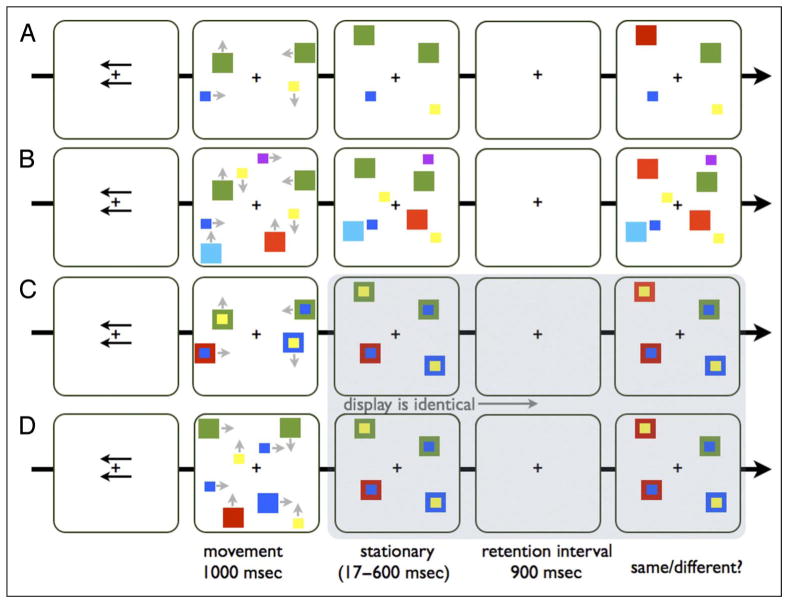Figure 1.
A schematic example of a trial sequence in Experiment 1. Each trial started with the presentation of two arrows, one above and one below fixation, indicating the relevant side for the upcoming trial. Then the colors moved for 1 sec (the gray arrows that appear next to the colors in the movement phase only indicate their trajectory and did not appear in the actual experiment), followed by a stationary phase (100 msec in Experiment 1, 600 msec in Experiment 2, and 17 msec in Experiment 3) in which all the colors stayed in one position without moving, followed by the retention interval (900 msec), and then the test array was presented. (A) The two separate objects condition: two colors that moved separately. (B) The four separate objects condition: four colors that moved separately. (C) The color–color conjunction condition: two pairs of colors moved together, each pair is composed of one small colored square on top a big colored square. (D) The four-to-two condition: two pairs of colors that moved toward each other and ended up meeting one on top of each other. Note that the color–color conjunction condition and the four-to-two condition become perceptually identical during the movement phase.

